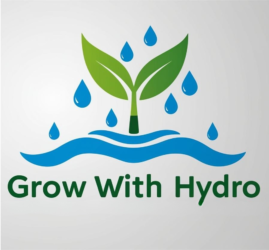Ever wondered how you can grow plants without all the mess of soil? Welcome to the world of Nutrient Film Technique, or NFT as it’s often called. This is a big name in the hydroponics universe. Originally developed in the 1960s by Dr. Allen Cooper, NFT uses a thin film of nutrient-rich water flowing along tilted channels where plant roots hang out.
Now, let’s talk components. An NFT system typically includes a reservoir, a pump, growing channels, and of course, a way to return the nutrient solution back to the reservoir. It’s kind of like a plant rollercoaster, only with water instead of gravity doing the heavy lifting. These systems are designed to be low maintenance while still providing everything plants need to thrive.
So, what makes NFT different from other hydroponic setups like deep water culture or aeroponics? Well, the thin nutrient film means roots get plenty of air exposure, which makes them strong and healthy. It’s like a cyclical buffet for your greens, which distinguishes it from systems where roots are either submerged or hit by mist.
NFT’s popularity is no accident. Urban farming and backyard setups love this technique due to its compact nature and efficiency. People are more into growing their own food these days, and NFT fits right in with that trend. It rocks in both small spaces and professional farms, proving that high-tech farming can be accessible to anyone.
How Nutrient Film Technique Works: A Step-by-Step Guide
Now that you’ve got a grip on what NFT is all about, it’s time to get into the nitty-gritty of how it works. Setting up an NFT system isn’t as complicated as it sounds, and once it’s going, it practically runs itself.
Picture this: you have channels slightly tilted so that gravity can help with the flow of nutrients. Each channel houses several plants, with their roots hanging freely inside. The vital piece here is your pump, which pushes the nutrient-rich water solution from the reservoir up to the top of your channels. From there, it flows over the roots and back to the reservoir, forming a neat little loop.
The nutrient solution is the life force of your NFT system – it’s like plant super juice. Getting the right mix is key. Typically, it includes essential minerals like nitrogen, phosphorus, and potassium, among others, at a specific pH and concentration. You want nutrients flowing at a steady rate – not too fast, not too slow – to perfectly nourish the roots.
Roots heavily depend on oxygen, and the NFT system’s design gives them all the air they need. As the thin film of nutrients washes over them, they’re exposed to the air, which boosts growth. This setup reduces the need for additional oxygenation methods.
Keeping an eye on your system’s health is super crucial. Regularly check your pH levels and nutrient concentration. An imbalance can throw your plant community into disarray. Just a little upkeep goes a long way in making sure your plants stay happy and healthy.
Advantages of Using Nutrient Film Technique
NFT isn’t just a slick way to grow plants—it’s a powerhouse of efficiency and practicality. One of the coolest perks of this system is how it maximizes space. Whether you’re in a sprawling farm or a cozy urban apartment, NFT can adapt and thrive, making it a go-to for those working with limited room.
When it comes to conserving resources, NFT systems shine bright. They use water and nutrients more frugally than traditional soil-based methods. The recirculating design means less waste and fresher, faster replenishment for plants. That’s both a win for your garden and the environment.
Bugs and diseases love soil, but in an NFT setup, their typical hangouts are missing. By minimizing contact with soil, NFT systems significantly reduce the risks of soil-borne pests and diseases. That translates to less hassle and healthier plants all around.
For folks looking to boost their green yields, NFT has you covered. This method can lead to quicker growth rates thanks to the consistent nutrient availability and optimal root environment. Steady and abundant nourishment helps plants grow faster and often results in higher yields compared to conventional growing methods.
Optimizing Your Nutrient Film Technique System for Best Results
So you’re all set with your NFT system and looking to get the most out of it. First off, choosing the right crops is essential. Leafy greens like lettuce and spinach love this setup, but so do herbs like basil and mint. Even strawberries can thrive with the right conditions.
Tailor your nutrient solutions to match your plants’ specific needs. It’s all about balance—adapt your mix as plants grow, ensuring that they’re getting the necessary nutrients at each stage.
Technology can give you an edge in managing and monitoring your system. Sensors for pH and nutrient levels, like those fancy smart home gadgets, can keep things running smoothly while giving you peace of mind.
Challenges do pop up. Maybe your nutrient solution flow isn’t quite right or pH levels go haywire. Having troubleshooting tricks up your sleeve is key. Be ready to tackle these issues by keeping supplies on hand and learning from any hiccups.
Embrace innovations that enhance NFT efficiency. New designs and techniques are emerging all the time, offering tweaks and improvements that can make your system even more effective. Stay informed, and don’t hesitate to upgrade when a cool new tool hits the market!
